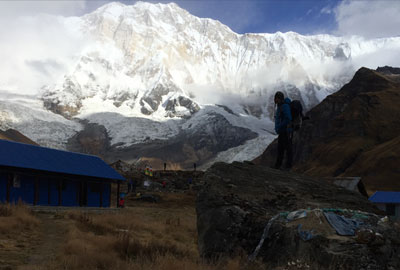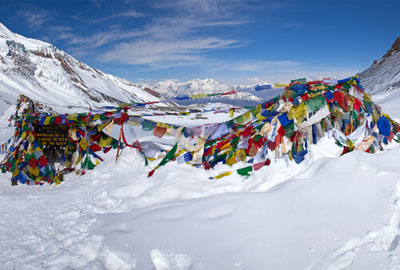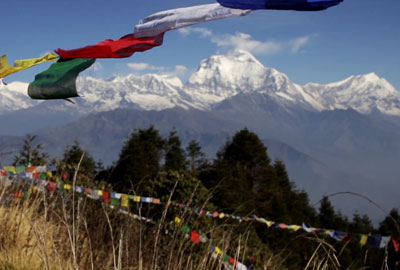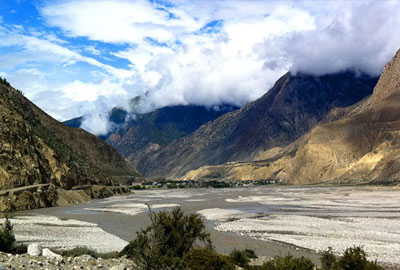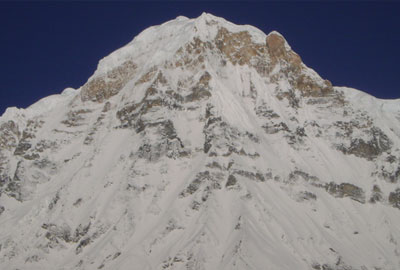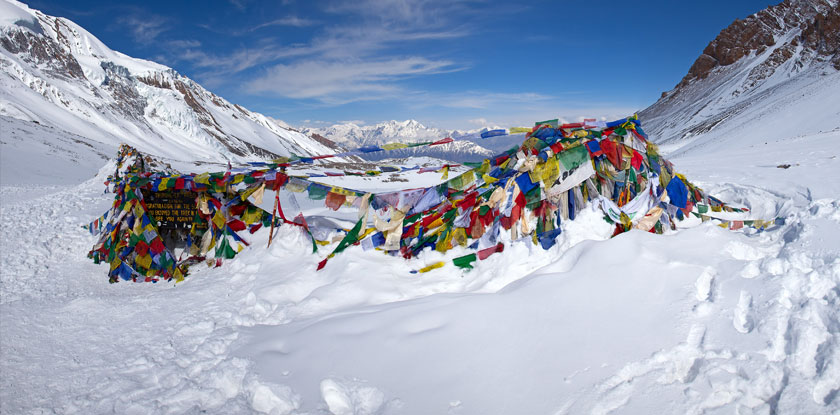
Annapurna Circuit Trek
One of the world’s best trekking and walking areas popular by the name Annapurna, which is part of the Himalayan chain, located in the western part of Nepal. Depend with the availability of the time there are various routes like just to cover the glimpse of Annapurna or going around the Annapurna or going to the basecamp so one can see the unparalleled beauty of the mountains and local lifestyle of mountain people. Is practically a land of gurkhas as well as many of the gurkha soldier coming from these areas. Depend with where you go but the gateway to Annapurna is Pokhara, a fertile valley with a million population except you want to make Annapurna circuit. Annapurna circuit trek start from Beshisahar, is a small hill town located in the hilly area of western Nepal. Mostly the trail passes through the mountain village, terraced farming, forest and on the higher elevation may be some pastures as well.
Annapurna circuit trek start practically at low elevation Beshisahar (830m.) and reach up to highest pass of the area Thorung La (5416 m.). This gives opportunity for the trekker see the lifestyle of people behind these eight thousand meter peaks, specially a rain shadow area, visit popular pilgrimage site and sacred temple of Muktinath and discover the world’s deepest gorge in Kaligandaki valley. Flora and fauna, mountain lakes and glaciers as well as glacial valleys and talus deposits are of special interest to people.
Highlight of the Annapurna Circuit Trek
An included sightseeing in Kathmandu that gives opportunity to discover the famous monuments in Kathmandu and recover from Jetlag before starting the trip and even prepare for the trek like gears shopping, hiring etc.
The world famous Marshyangdi valley is traversed all the way almost up to the starting point of the river. Trekking in the valley is the best way to observe the valley made by river and the landscape made by the river.
To see all the terraced farming, once was a river flood plain but now a day developed a farmland with irrigation facilities and they can grow rice twice a year which helps feeding the people.
Annapurna circuit trek gives opportunity to discover the rain shadow area behind the mountains. As all the rain bearing wind is blocked by these giant mountains, the rain bearing wind which start in Bay of Bengal collided against the mountains resulting the front side of the mountains where it rains more in Nepal and back side of the mountain where they receive very less rain and most of the time with dry air.
As the trek offers the views of Annapurna Mountain all around the trek is equally popular by the name around Annapurna trek. The views of Annapurna peaks are even better from backside as the distance are very short from the trails.
Annapurna circuit trek takes to the one of the highest pass in Nepal Thorung-La with an elevation of 5,416 meter above sea level and give opportunity to observe the breathtaking views of surrounding area.
Annapurna circuit trek gives opportunity to discover a popular glacial lake of the area Gangapurna which often change color with different season.
Annapurna circuit trek also pass through the village of Muktinath and Muktinath considered spiritual and pilgrimage center for both Hindus and Buddhist. Many Hindus offer a special prayers and memory day for deceased member in the family at Kagbeni . Organizing a memory day there the deceased will secure good position in the heaven.
The apple capital of Nepal, Marpha is on the way so one can get opportunity to observe the apple farming in the area.
The world’s deepest gorge is located in the trek as the Dhawalagiri, one of the eight thousand meter peak rises up the valley of Kaligandaki which is deepening day by day. From the bank of Kaligandaki river they collect ammonite fossils which they consider was a life in Jurassic time at the sea bottom.
The Annapurna circuit trek includes the best point to observe the Annapurna range, Poonhill , which is even a highlight of many treks in Annapurna area.
Annapurna circuit trek covers most part of Annapurna Conservation Area which is preserved by Annapurna Conservation Area Project and the ACAP is one of the successful projects to preserve biodiversity, vegetation and culture of the area. The entry fees they collect from the trekkers are partially utilized for the betterment of the society in the conservation area.
Annapurna circuit trek passes through different villages which follow different religion and the villages of different ethnic groups which give opportunity to mingle with vivid culture of all these ethnic groups.
Annapurna circuit trek end in Pokhara, the second important tourist town in Nepal after Kathmandu. One can have some free days to observe these touristic city or just chill out at the shore of the lake with your favorite drink observing the lake and one can stroll around the lake observing the serenity and calmness of the lake.
Demerit of Annapurna circuit trek
Everywhere up to Manang from Beshisahar and from Muktinath up to Tatopani they made the rough road which is not blacktopped and lot of trails now coincides with the rough road they made and as people are walking they got distracted by passing vehicles frequently killing the beauty of walking in that area. In summer days even it is full of dust in part of the trail.
What are the alternatives?
Instead of doing the whole Annapurna Circuit Trek one can take a drive for part of the sections like from Beshisahar to Chame and even from Muktinath or Jomsom to Tataopani and rest of the trails which are beautiful to walk. If you are lacking time then you can also take a flight back to Pokhara from Jomsom. As the trekking contain a high pass of Throung-La, driving all the way to Manang and continue the trek might result in unsuccessful trek or incomplete trek due to acute mountain sickness. If you do not have a prior exposure to high altitude we don’t recommend you to drive beyond Chame for successful completion of your dream trek. If somebody worries about taking the small planes from Jomsom to Pokhara one can take a jeep or local bus depending with how thick your wallet is for that part. From Pokhara one can go to Chitwan National Park before returning to Kathmandu.



